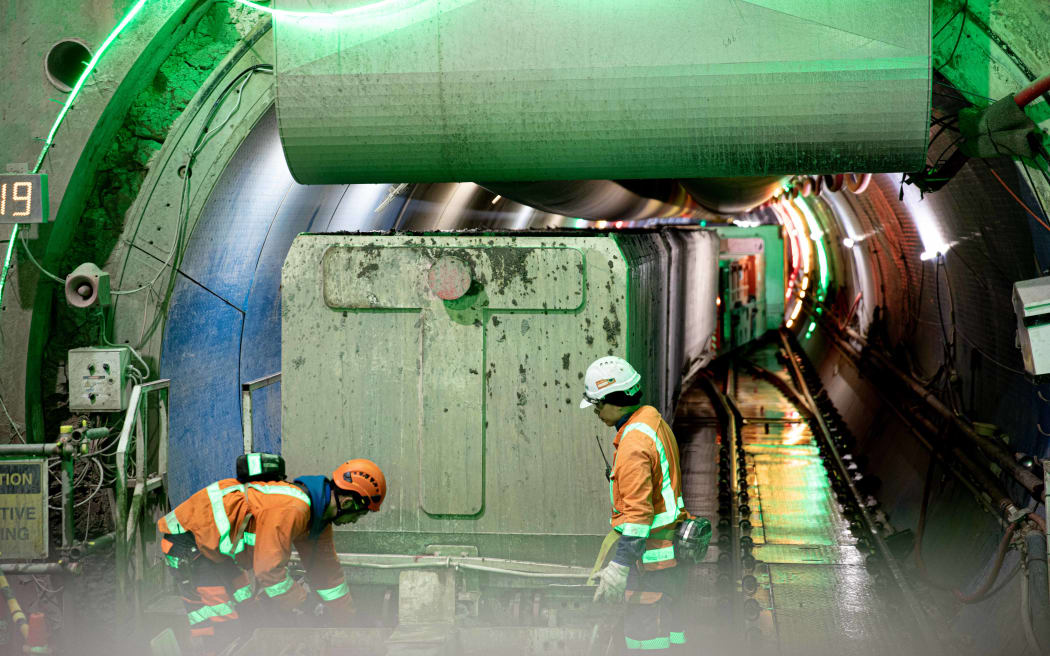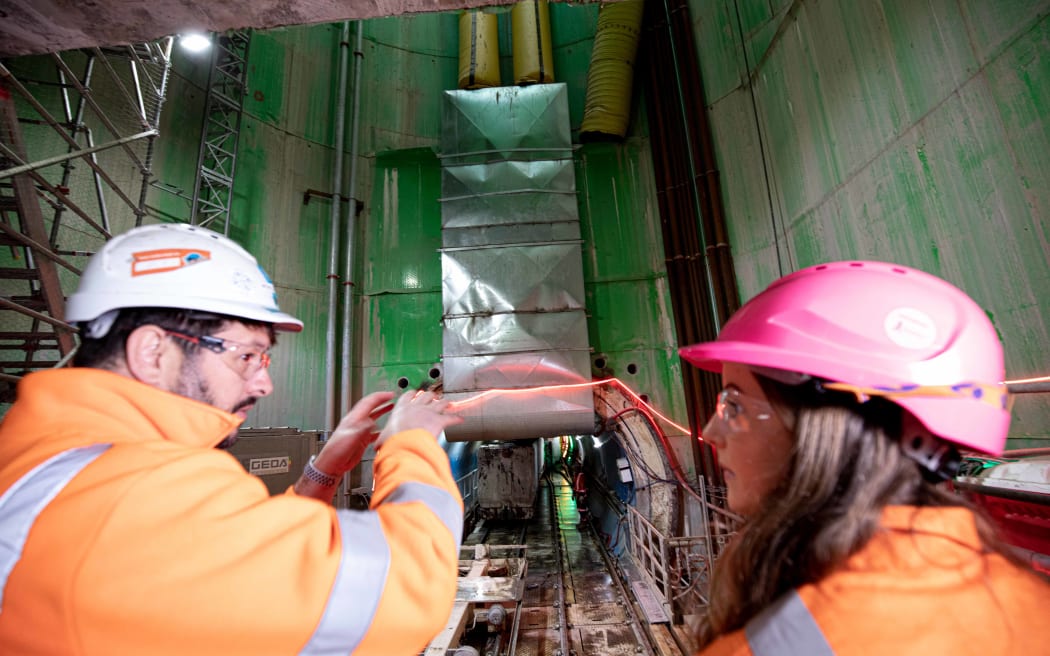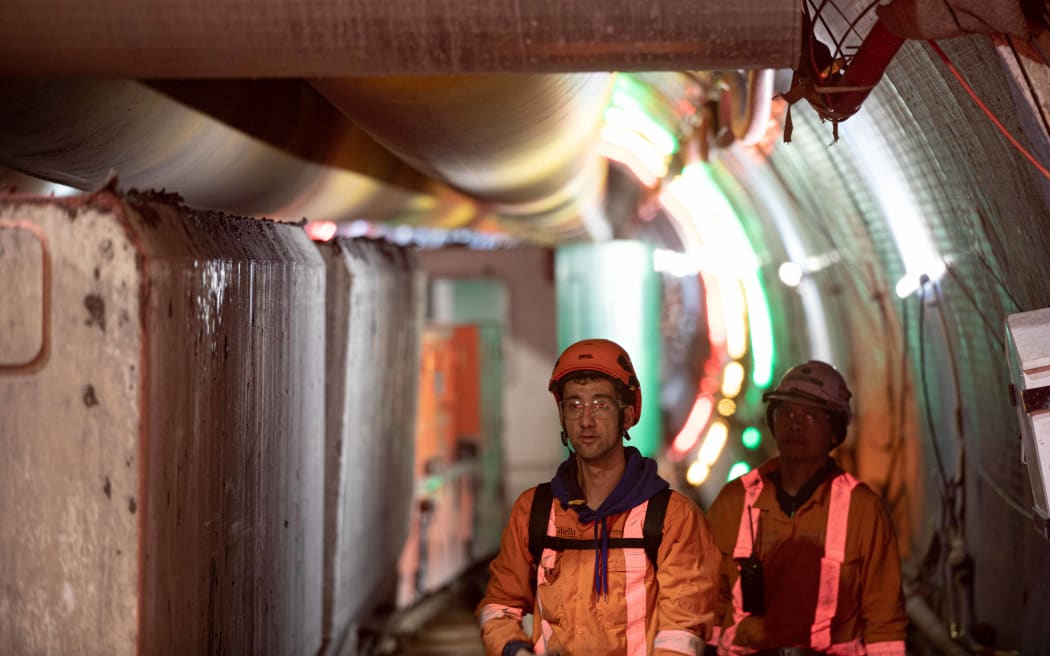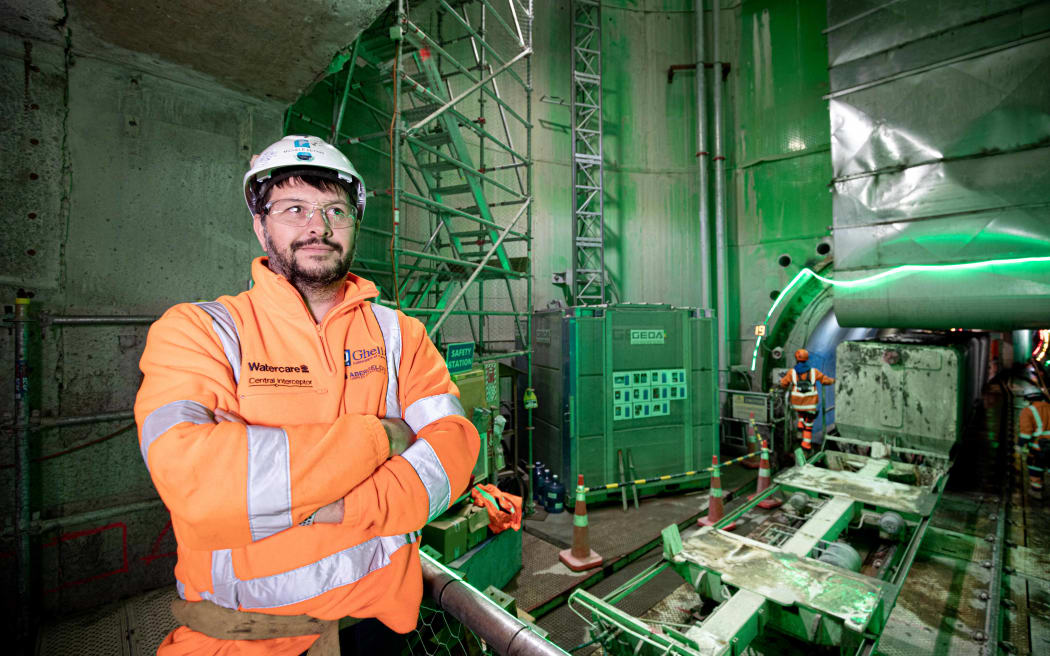Tāmaki Makaurau's growing population is putting a strain on the city's waste water network.
When it rains heavily, sewage overflows into stormwater drains and out to sea, often making it unsafe to swim at Auckland beaches after a downpour.

Workers prepare the tunnel boring machine to dig the tunnel for the central interceptor stormwater system under the Manukau Harbour. Photo: RNZ / MARIKA KHABAZI
Watercare's waste water tunnel - known as the Central Interceptor - is aimed at reducing those overflows by 80 percent.
The 15km pipeline is being dug by a boring machine, creating a tunnel with a diameter of about 4.5 metres - about as high as a giraffe and as wide as four rhinos.
The tunnel boring machine began its journey in Māngere in September 2021. It has travelled 2.5km and is currently sitting 25 metres underground.

Photo: RNZ / Simon Rogers
The corridor will run from Mangere all the way to Grey Lynn. Right now its biggest task is passing under the harbour, 15 metres below the sea bed.
Programme Director Shane Cunis says there is a potential risk of flooding if water seeps through the cutter head, so detailed work on the machine beforehand has been crucial.

Workers prepare the tunnel boring machine to dig the tunnel for the central interceptor stormwater system under the Manukau Harbour. Photo: RNZ / Marika Khabazi
But if something does go wrong, the TBM is equipped with two safety chambers that can hold 40 people for up to 24 hours.
It will take around three months to tunnel under the harbour, excavating 16 metres a day.
There are dozens of different nationalities on the team, a lot of workers have travelled from Italy, bringing their Patron Saint of Mining Saint Barbara with them.

Michele Petris working on the tunnel boring machine for the central interceptor. Photo: RNZ / Marika Khabazi
Tunnel Manager Michele Petris is one of them. All up there are over 500 people involved in the project.
Petris said after the soil is delivered to the end of the TBM, it is then transported onto trucks and taken to nearby Puketutu island to transform a former quarry into a park for locals.
The machine is expected to reach dry ground in Hillsborough by December.


